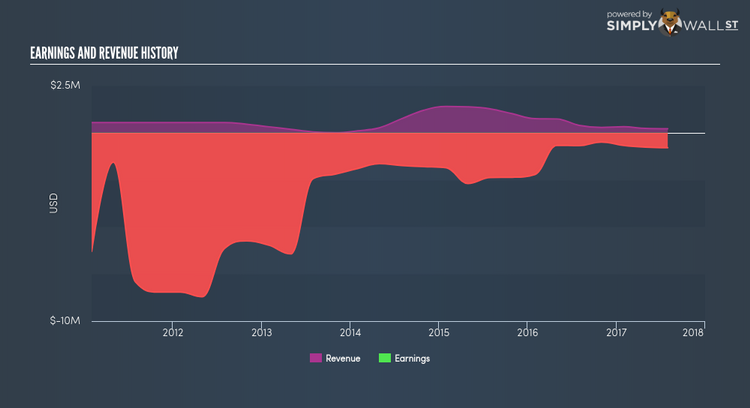Should You Worry About Groundstar Resources Limited’s (CVE:GSA) CEO Pay Check?

Ty Pfeifer has been at the helm as CEO of Groundstar Resources Limited (TSXV:GSA), which has grown to a market capitalization of CADCA$466.26K. Understanding how CEOs are incentivised to run and grow their company is an important aspect of investing in a stock. This is because, if incentives are aligned, more value is created for shareholders which directly impacts your returns as an investor. Today we will assess Pfeifer’s pay and compare this to the company’s performance over the same period, as well as measure it against other Canadian CEOs leading companies of similar size and profitability. See our latest analysis for Groundstar Resources
Did Pfeifer create value?
Profitability of a company is a strong indication of GSA’s ability to generate returns on shareholders’ funds through corporate activities. In this exercise, I will use profits as a proxy for Pfeifer’s performance. In the past year, GSA released negative earnings of -$0.8M , which is a further decline from prior year’s loss of -$0.7M. Moreover, on average, GSA has been loss-making in the past, with a 5-year average EPS of -$0.5. In the situation of negative earnings, the company may be incurring a period of reinvestment and growth, or it can be an indication of some headwind. In any case, CEO compensation should emulate the current condition of the business. From the latest financial statments, Pfeifer’s total remuneration increased by 37.50% to $55,000. Moreover, Pfeifer’s pay is also made up of 25.75% non-cash elements, which means that variabilities in GSA’s share price can move the true level of what the CEO actually collects at the end of the year.
Is GSA’s CEO overpaid relative to the market?
While one size does not fit all, since remuneration should be tailored to the specific company and market, we can fashion a high-level thresold to see if GSA deviates substantially from its peers. This outcome can help direct shareholders to ask the right question about Pfeifer’s incentive alignment. Normally, a Canadian small-cap has a value of $345M, produces earnings of $24M, and remunerates its CEO circa $770,000 per annum. Typically I would look at market cap and earnings as a proxy for performance, however, GSA’s negative earnings lower the effectiveness of this method. Given the range of pay for small-cap executives, it seems like Pfeifer is being paid within the bounds of reasonableness. Putting everything together, although GSA is loss-making, it seems like the CEO’s pay is appropriate.
What this means for you:
Are you a shareholder? CEO pay is one of those topics of high controversy. Nonetheless, it should be talked about with full transparency from the board to shareholders. Is Pfeifer remunerated appropriately based on other factors we have not covered today? Is this justified? As a shareholder, you should be aware of how those that represent you (i.e. the board of directors) make decisions on CEO pay and whether their incentives are aligned with yours. To find out more about GSA’s governance, look through our infographic report of the company’s board and management.
Are you a potential investor? Although remuneration can be a useful gauge of whether Pfeifer’s incentives are well-aligned with GSA’s shareholders, it is certainly not sufficient to base your investment decision solely on this factor. Whether the company is fundamentally strong depends on GSA’s financial health and its future outlook. To research more about these fundamentals, I recommend you check out our simple infographic report on GSA’s financial metrics.
PS. If you are not interested in Groundstar Resources anymore, you can use our free platform to see my list of over 50 sustainable companies producing great returns.
To help readers see pass the short term volatility of the financial market, we aim to bring you a long-term focused research analysis purely driven by fundamental data. Note that our analysis does not factor in the latest price sensitive company announcements.
The author is an independent contributor and at the time of publication had no position in the stocks mentioned.

